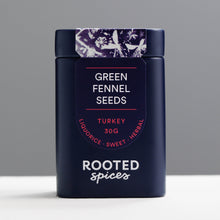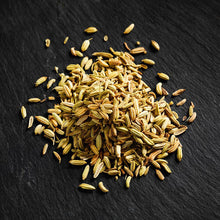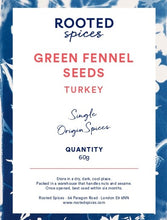- INFO
- WHERE
- RECIPES
- STORAGE
- HEALTH
I’m sure we’re not alone in chewing on fennel seeds. These liquorice-sweet seeds are so plump and potent – why only use fennel seeds as a mukhwas mouth freshener on leaving an Indian restaurant? Though fennel seeds look similar to caraway or cumin seeds, they are sweeter with a purer anise flavour.
Fennel is an ancient spice which was used in Roman kitchens, where the sweet seeds balanced big flavours like boar or venison. It’s still a flavour associated with robust Italian dishes: ragu, stuffed porchetta, salamis. Harness Italian flavours in a simple tomato sauce by adding a teaspoon of the seeds to the slow-cooking onions, or add fennel seeds to mince when making meatballs.
Ancient spice routes meant that fennel travelled the world, and its anise aromas crop-up in traditional Chinese Five Spice mixes or Indian kitchens, where the seeds might be used to infuse chai, to ‘temper’ tadka daal ... or simply chewed as a tasty mouth freshener.
ALSO KNOWN AS: Foeniculum vulgare azoricum, lucknow, sweet cumin, hinojo, saunf, shamar
The warm sea breeze along the Mediterranean coast provides the best conditions for fennel plants, which often grow to head height. We import our seeds from Turkey, which has the perfect climate for plump and potent seeds. The seeds are carefully stripped from the seed heads and dried in late-summer sunshine.
COOK THIS
Sausage & Fennel Ragu
Fennel Seed, Coriander Seed and Peppercorn Pork Belly
Torie's Masala Chai
Fennel seeds should be stored in a dark, airtight container, to prevent them from sun-bleaching and losing their potent flavour.
Fennel has been used for centuries as a breath freshener and digestive aid, as well as helping with insomnia and even increasing the quality, quantity and flow of breast milk. The main constituents of fennel, anethole and flavonoids, are thought to contribute to fennel’s antioxidant and anti-inflammatory properties. For more information, click HERE.






